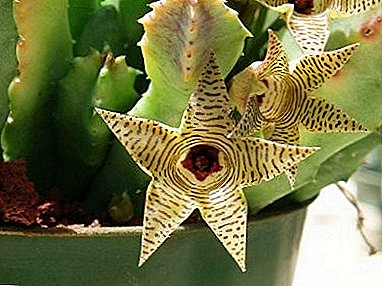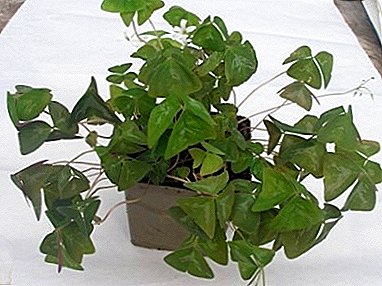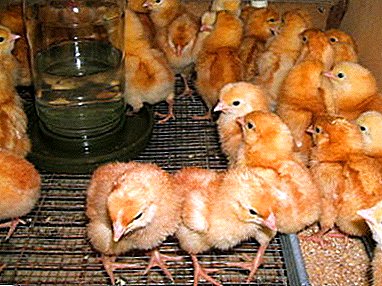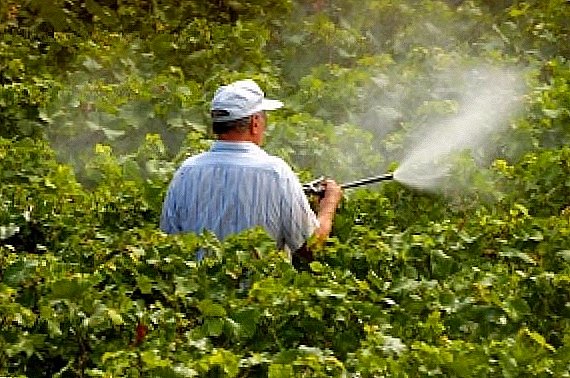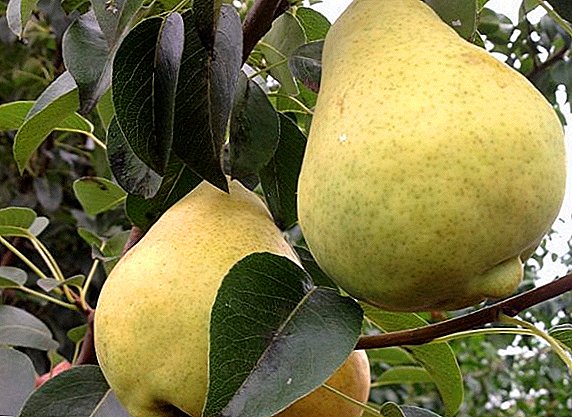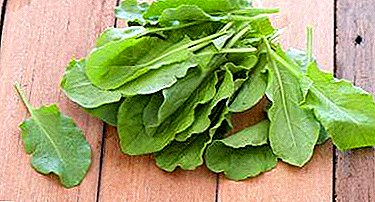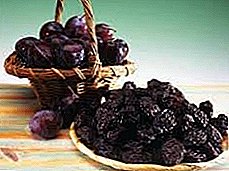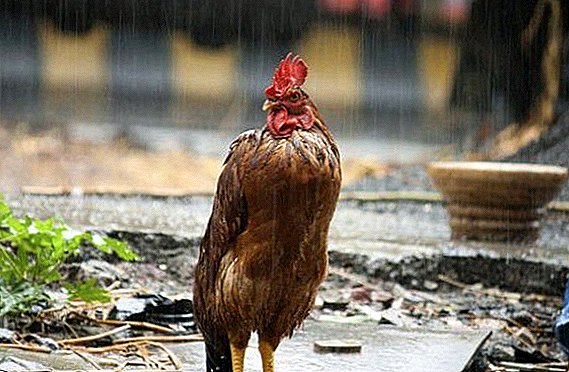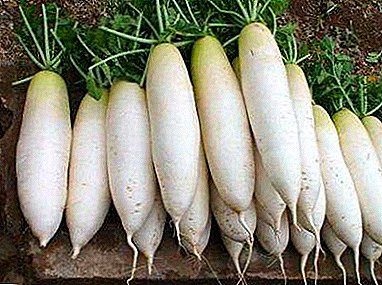
Radish Elephant Fang is a hybrid variety of Chinese radish. Vegetable belongs to the cabbage family (Cruciferous).
The plant is easily grown in a seedless way and is suitable for Central Russia.
In our article we will describe in detail how this variety looks and what is good, it is better to plant it in a greenhouse or in open ground.
You will learn how to properly grow Chinese Elephant Fang in order to get a good harvest of this wholesome vegetable.
Detailed characteristics and description of the variety
- Appearance. Root crops are smooth, oblong, cylindrical, up to 20 cm in length, up to 8 -9 cm in diameter. The color of the fruit is white with a greenish top. The flesh is white. Root crop weight - up to 400 - 500 g
The rosette of leaves is loose, raised, diameter - 60 - 70 cm. The leaves are green, narrow, dissected, have up to 6 pairs of lateral lobes. Leaf plate densely pubescent. The fruit itself is raised above the ground by 2/3, when harvesting is easily pulled out.
- When to plant? The elephant's canine is classified as a mid-season variety. It is recommended to sow not earlier than the end of June. The optimal time for planting seeds is mid-July.
Important: the grade differs in good keeping quality, suitable for long-term storage.
- Productivity High-yielding variety, from 1 sq. m. can harvest 3 - 4 kg of root vegetables.
The variety is high-yielding.
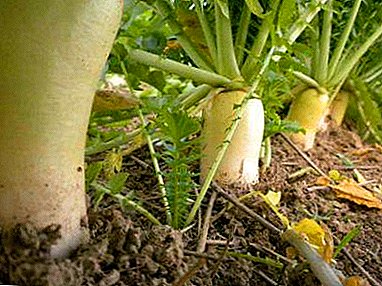 Where is it recommended to grow? Excellent for outdoor cultivation.
Where is it recommended to grow? Excellent for outdoor cultivation.Sowing is carried out on a flat surface in rows (distance between rows up to 60 - 70 cm), also on beds and crests (distance between the lines up to 40 - 50 cm).
Can grow on loamy soils. High yields can be achieved on fertile, fertilized soil.
It is better to sow a variety after potatoes, onions, tomatoes and cucumbers. It is not recommended to plant after cabbage crops.
- Resistance to diseases. The variety is unpretentious, resistant to diseases. However, in case of violation of the irrigation regime, drying of the soil, the roots become flabby, and color flowering appears. The arrows must be immediately cut off so that the fruits fully matured.
From excess fertilizer fruits crack, taste is reduced. It is not recommended to bring fresh manure into the soil, there is a risk of infection with pathogenic infections.
- Maturation term. Matures within 2, 5 - 3 months, depending on the region and growing conditions.
- What kind of soil prefers? For a good harvest, the soil should be light, loose, neutral in acidity, well fertilized when sown.
The site is deeply dug up, on 20 - 30 cm. Still since autumn rotten manure, compost or humus is brought. In the spring fertilizers are applied:
- potassium salt (20 g per 1 sq.m.);
- ammonium sulphate (30 g per 1 sq. m.);
- compost (2 kg per 1 sq. m.);
- humus (4 kg per 1 sq. m.).
Important! With increased acidity of the soil in autumn, the soil must be neutralized by adding chalk, slaked lime or crushed egg shells when digging up the site.
Breeding history
Chinese radish varieties are common in:
- China;
- Japan;
- Korea;
- Far East.
The elephant's fang is grown in Russia, the Caucasus. Hybrid variety bred in the Kuban. At first, the variety was zoned, then it became widespread throughout Russia.
Today is one of the most popular and sought after varieties of Chinese radish.
Distinctive features
Differs in stable high productivity and flavoring useful properties. Root crops are larger than European radish varieties.
Unlike other types of radish, the root of the root contains a small amount of rare oil, therefore it has a mild juicy sweetish taste without sharp bitterness. The flesh is white, juicy, tender, crisp. Fruits with proper wintering retain their qualities until the spring.
Picks and hybrids
Red mit
Mid-season variety, not suitable for wintering. The leaves are erect, dentate, dark green colors. Root crops are rounded, green tops. The root mass is up to 200 g. The flesh is juicy, red. Productivity is high.
This is what this variety looks like:

The beauty of the Moscow region
The rate of ripening is average, up to 2.5 months. Fruits can be rounded and elongated. The tops are a rich red color, the fruit itself is reddish with a purple tint. The root mass is up to 150 - 200 g. The flesh is white, crunchy, weak-sharp.
In the photo - this variety:

October - 2
Hybrid variety matures in 2 - 2.5 months. The root crop is elongated, cylindrical. The fruit is white, the top is green. The flesh is tender, juicy, white.
It looks like a vegetable:

Advantages and disadvantages
Vegetable is rich in:
- vitamins of group B, PP;
- carotene;
- amino acids.
Root vegetables contain many minerals:
- potassium;
- chlorine;
- calcium, etc.
The plant is useful for the normalization of the gastrointestinal tract. The essential oils contained in the fruit have anti-inflammatory effects. Root juice dissolves small stones in the kidneys and liver. It is considered an excellent medicine for arthritis, radiculitis. Removes toxins and wastes from the body.
There are contraindications to use, namely:
- It is not recommended to eat pregnant women, there are difficulties in carrying the fetus.
- Do not eat root vegetables raw to nursing mothers.
- In chronic gastritis, pancreatitis, heart disease, kidney, fruits can be consumed only in stewed and boiled form.
What and where is it used for?
The variety does not have a bitter taste, therefore it is used fresh, salted and boiled. Low-calorie fruits, can be used as a dietary product.
- Young shoots and leaves are added to salads.
- The tops can also be added to pet food.
- Root juice mixed with honey is used for colds, flu, cough.
- Chopped root vegetable is used as a local anesthetic as lotions.
Growing up
Important: Only well-filled seeds are used for sowing.
Seeding procedure:
 On 1 m of the garden, 3 rows are sown at a distance of 35-40 cm.
On 1 m of the garden, 3 rows are sown at a distance of 35-40 cm.- The distance between the seeds is 25-30 cm.
- Seeds are sunk into the soil by 2 - 3 seeds per 1 - 2 cm.
- Sowing is moistened, covered with a film for quick germination.
- With the appearance of 2 - 3 leaves of seedlings thinned out.
Weeding and shallow soil loosening is mandatory.
Watering regular, under the root. It is important to remember that only frequent and abundant watering gives a high yield.
Ready complex top dressings are used:
- Kemira - luxury ";
- "Kemira - wagon - 2", etc.
During the season it is necessary to fertilize the soil 2 - 3 times.
Harvesting and storage
Harvesting is recommended before the onset of the first frost. Root crops are dug in dry weather. On loose soils, fruits are easily pulled out for tops, on heavy soils it is better to dig under the shovel in order not to damage the root crop.
Leaves are not cut, it is recommended to break off twisting, a petiole 1–2 cm long remains.
It is better to store in wooden boxes, sprinkling fruit with sand. Can be stored in bulk in the basement, like potatoes. In apartment conditions, root crops are kept in an open plastic bag, at a temperature of 0 -2 ° C.
The required air humidity for wintering is 80 - 85%.
Diseases and pests
- Red fleas - small jumping bugs gnaw holes in the leaves. Especially attack the plant in dry hot weather. Leaves and soil should be treated with a mixture of tobacco dust and ash, in a ratio of 1: 1. Heavily infected areas should be sprayed with a solution of "Decis" or "Arrivo".
- To get rid of the slugs and cabbage leaf beetles, gnawing the leaves of the plant, will help get rid of the solution "Aktellika."
- Aphids and wavy fleas are destroyed with a mixture of liquid soap and any insecticidal preparation (Konfidor "," Aktara ") in a 1: 2 ratio.
Prevention of various problems
 In order for the fruits to fully ripen, you must regularly and abundantly moisten the soil.
In order for the fruits to fully ripen, you must regularly and abundantly moisten the soil.
It is important to strictly observe the mode and dosage of fertilizers.so that the roots are not deformed, do not lose taste.
To prevent the emergence of garden pests and diseases immediately, when the first shoots appear, it is necessary to sprinkle the beds with tobacco dust or ash. You can water the plants with a strong extract of wormwood.
Similar species
- White Fang. Refers to mid-season varieties. Also, like the Elephant Fang variety, it has an elongated white root crop. The taste is sweet, with a slight bitterness.
- Big bull. Domestic mid-season hybrid. The shape of the roots are also elongated, pointed at the bottom, wide at the base. The flesh is juicy, has healing properties.
- Russian size. Variety as well as the hybrid Elephant Fang, is distinguished by an elongated shape of the root. Fruits are white, with a smooth surface. Ripens quickly, retains juiciness for a long time, yields are high.
Chinese radish Fang elephant perfectly kept, retaining the nutritional and beneficial properties until the spring. The variety is quite unpretentious, easy to care, resistant to diseases. Gives a high yield even on weighted soils.


 Where is it recommended to grow? Excellent for outdoor cultivation.
Where is it recommended to grow? Excellent for outdoor cultivation. On 1 m of the garden, 3 rows are sown at a distance of 35-40 cm.
On 1 m of the garden, 3 rows are sown at a distance of 35-40 cm.